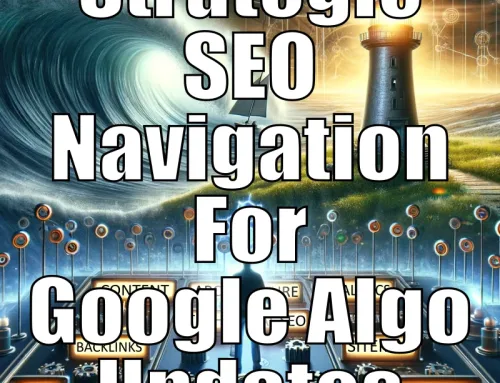 In today’s digital landscape, having a strong online presence is crucial for businesses to thrive. And when it comes to enhancing your online visibility, search engine optimization (SEO) plays a pivotal role. Creating high-quality, keyword-rich content is a fundamental aspect of SEO that can significantly impact your website’s ranking on search engine result pages (SERPs). In this article, we will delve into valuable insights and strategies that will help you improve your SEO content and achieve better organic visibility.
In today’s digital landscape, having a strong online presence is crucial for businesses to thrive. And when it comes to enhancing your online visibility, search engine optimization (SEO) plays a pivotal role. Creating high-quality, keyword-rich content is a fundamental aspect of SEO that can significantly impact your website’s ranking on search engine result pages (SERPs). In this article, we will delve into valuable insights and strategies that will help you improve your SEO content and achieve better organic visibility.
If there are any topics in this article which you do not fully understand, or would like more information on the services we can provide you, please do not hesitate to contact us. And if you feel you need additional help with your Kelowna search engine optimization, also contact us.
Understanding SEO Content
What is SEO Content?
SEO content refers to the creation and optimization of website content with the goal of improving its visibility on search engines. It involves strategically incorporating relevant keywords, creating engaging and valuable content, and ensuring proper on-page optimization techniques.
The Importance of SEO Content
Effective SEO content can bring numerous benefits to your online business. By optimizing your content, you increase the chances of search engines recognizing its relevance to users’ search queries, thus improving your website’s visibility. Higher visibility leads to increased organic traffic, which in turn can boost brand exposure, generate leads, and drive conversions.
Keyword Research and Optimization
Conducting Keyword Research
Keyword research is the foundation of successful SEO content. It involves identifying the terms and phrases that your target audience is searching for. By understanding their search intent, you can create content that aligns with their needs and preferences.
To conduct keyword research effectively, utilize keyword research tools such as Google Keyword Planner, SEMrush, or Ahrefs. These tools provide valuable insights into search volume, competition, and related keywords, helping you make informed decisions about the keywords to target.
Keyword Optimization
Once you’ve identified your target keywords, it’s crucial to optimize your content to maximize its visibility. Here are some best practices for keyword optimization:
- Title Tag Optimization: Include your primary keyword in the title tag of your webpage. Keep it concise, compelling, and relevant to attract both search engines and users.
- Meta Description Optimization: Craft a persuasive meta description that includes relevant keywords and compels users to click through to your website.
- Header Tag Optimization: Utilize header tags (h1, h2, h3) to structure your content and highlight important sections. Incorporate keywords naturally within these headings.
- Keyword Placement: Strategically place keywords throughout your content, including the introduction, subheadings, and body text. However, ensure that keywords are used naturally and don’t compromise the readability of your content.
- Alt Text for Images: Optimize image alt text by incorporating relevant keywords, providing search engines with context about the image’s content.
- URL Structure: Create user-friendly and keyword-rich URLs that accurately describe the content of the page.
Creating Engaging and Valuable Content
Understanding User Intent
When crafting SEO content, it’s crucial to understand the intent behind users’ search queries. Search intent can be categorized into four main types: informational, navigational, transactional, and commercial investigation. By aligning your content with the user’s intent, you can deliver valuable information and enhance user experience.
Crafting Compelling Headlines
Headlines are the first impression your content makes on users. Compelling headlines grab attention, pique curiosity, and encourage users to click. Incorporate your primary keyword naturally into your headline while ensuring it remains engaging and captivating.
Providing In-Depth and Comprehensive Information
High-quality content goes beyond keyword optimization. It should aim to provide in-depth, comprehensive information that satisfies users’ queries. Conduct thorough research, cite credible sources, and offer unique insights to establish your expertise and authority in the field.
Structuring Your Content
Organizing your content in a logical and structured manner improves readability and user experience. Break down your content into sections and utilize subheadings (h2, h3) to create a clear hierarchy. This not only makes it easier for readers to skim through your content but also helps search engines understand the structure and relevance of your content.
Incorporating Multimedia Elements
Engage your audience by incorporating multimedia elements such as images, videos, infographics, and interactive elements. Visual content not only enhances the overall user experience but also increases the likelihood of your content being shared and linked to by others.
The Power of Backlinks
Backlinks, or incoming links from external websites, are a crucial factor in determining your website’s authority and credibility. Search engines view backlinks as votes of confidence, indicating that your content is valuable and trustworthy. Here are a few strategies to acquire high-quality backlinks:
- Guest Blogging: Contribute informative articles to reputable websites within your industry. Include a backlink to your website within the author bio or content, driving referral traffic and boosting your website’s authority.
- Content Promotion: Promote your high-quality content through various channels such as social media, email newsletters, and outreach to influencers. When others discover your valuable content, they are more likely to link back to it.
- Link Building Outreach: Reach out to relevant websites and influencers in your industry and propose mutually beneficial partnerships. Offer valuable insights, collaborate on content, or provide expert quotes that can lead to backlinks.
Monitoring and Analysis
To continually improve your SEO content strategy, it’s essential to monitor its performance and make data-driven decisions. Here are some key metrics to track:
- Organic Traffic: Monitor the volume of traffic your website receives from organic search. Identify trends, patterns, and opportunities for improvement.
- Keyword Rankings: Keep track of your target keywords and their rankings on search engine result pages. Identify keywords that are performing well and those that require optimization.
- Bounce Rate: Analyze the bounce rate of your webpages to understand user engagement. A high bounce rate may indicate a need for improvements in content relevance or user experience.
- Conversion Rate: Measure the conversion rate of your SEO content, whether it’s signing up for a newsletter, making a purchase, or submitting a contact form. Identify areas for optimization to maximize conversions.
- Social Signals: Monitor the social media engagement and shares your content receives. Increased social signals indicate the relevance and value of your content.
Conclusion: Putting it All Together
In the ever-evolving world of SEO, creating high-quality, optimized content is key to improving your website’s visibility and attracting organic traffic. By conducting thorough keyword research, crafting engaging content, optimizing on-page elements, acquiring high-quality backlinks, and analyzing performance, you can stay ahead of the competition and achieve better rankings on search engine result pages. Remember, creating valuable content that meets users’ needs should always be your top priority. So, start implementing these valuable insights into your SEO content strategy and witness the positive impact on your online presence and business growth.
Let’s Work Together
TELL US MORE ABOUT YOUR PROJECT
Let us help you get your website found. Or, if you simply have a few questions, then fill out the form below and we will get back to you.

